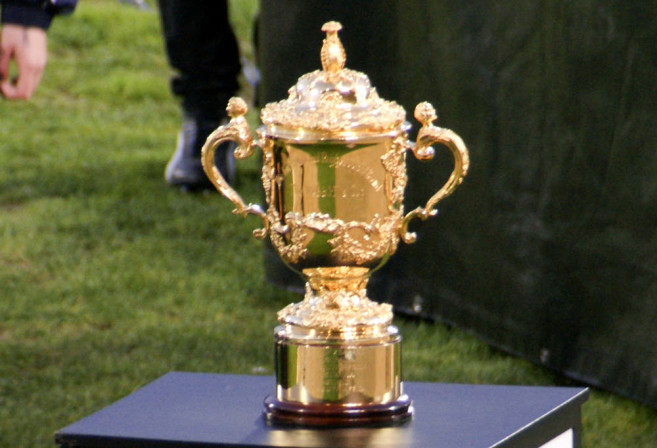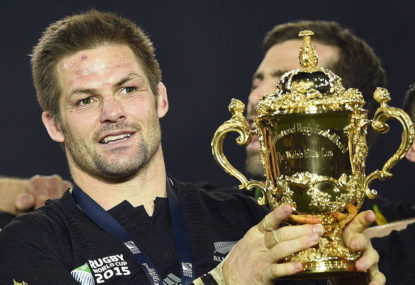Prior to the 2011 edition of the Rugby World Cup, there was chat that the game’s showpiece event should be reduced down to 16 teams to save putting the ‘minnows’ to slaughter while tightening up the competitiveness of all games.
What followed was the lesser lights of the rugby world stepping up to the plate with some tight games between the haves and the have nots as well as a host of highly entertaining games between lower tier nations that would slip under the radar if they weren’t to take place at a World Cup.
The much improved standard delivered by the ‘minnows’ put to bed the discussions of reducing the number of teams and over the last couple of years the attention has turned to when should the numbers be increased and what would the structure of an expanded Rugby World Cup look like?
Given the current state of the international game, I think World Rugby have the model right for the foreseeable future. But that’s not to say there won’t be a point in time where an expanded format is required that reflects the global growth of the game.
When I have thought about this in the past, I have looked at the 32-team model as the perfect format to conduct a World Cup event.
Eight pools of four teams, where the top two of each pool following group-play advance to the knock-out phase of the tournament that kicks off with a round of 16.
It gives each team three games to prove their worth and the top four sides play a total of seven games by the end of the tournament which is equal to what the Rugby World Cup Semi Finalists will have played by the close of the event.
Although I believe the game they play in heaven is still some time away from requiring a World Cup expansion beyond the current twenty team model, this 32-team structure is what I have had in the back of my head as what World Rugby should move towards when the time is right.
The issue with this pathway of expansion is that a jump from twenty to thirty two is a significant one. To maintain interest in the group phase of the tournament, you would want at least another six teams (probably seven when including Italy) to be snapping at the heels of the tier one nations as well those extra twelve spots going to nations who would be roughly at the current standard of the likes of Georgia, Tonga etc.

Then quite shockingly, controversial news came from Zurich last week that FIFA are set to move away from the 32-team model in place of a new 48-team structure that will make its debut at the 2028 World Cup.
Under this arrangement the teams will be broken up into sixteen groups of three where the top two will advance to a round of 32 prior to the round of 16 and so on.
My initial thoughts were that this was madness and nothing more than FIFA doing what FIFA does best which is of course fattening their bottom line.
After a discussion on the topic with a football loving friend from Sweden, I began to understand that as well as providing a huge financial windfall, it provides the opportunity to promote the game to a wider audience and capture the hearts and minds of countries that could only ever dream of competing in a Cup under the 32-team model.
My friend was also quick to add that it ‘should’ see an end to days where one or two of the games superpowers miss out on qualifying for the tournament all together. His beloved Sweden failed to qualify in 2010 and 2014 and with France and the Netherlands in their qualifying group for 2018, they face an uphill battle to make it to Russia.
That to me though is part of the romance of the FIFA World Cup and something that us in the rugby world can only dream of, so I remain to be convinced that this is a good move (for at least the fans) by the games organising body. But it did get me thinking whether this new model (or a similar version of it) could provide that stepping stone for World Rugby on the way towards an eventual 32-team tournament, and I believe it could.
Of course that doesn’t mean following FIFA to a 48-team model, but instead a 24-team version. Prior to this move by FIFA, I always looked at 24-team cups as an ugly arrangement.
The old Heineken Cup was run under a 24-team structure where the strongest two runners up of each group were awarded Quarter Final births. It just doesn’t sit well with me that teams finishing second across all groups don’t achieve the same fate. The alternative is of course to have four groups of six, but that would be too many games in group-play in my belief.
A similar structure to what FIFA is set to introduce where eight groups of three compete in group-play with the top two advancing to a round of 16 looks pretty tidy to me though.
It does mean that some minnows will only play two games at the World Cup as opposed to four but when the time is right, it’s a price well worth paying for involving a further four minnows that otherwise wouldn’t be competing at all.
For the next eight that are eliminated from the tournament following the round of 16, they will also miss a game that they would have had under the current structure, but imagine the buzz in emerging markets like the US or a rugby-loving country like Samoa when they advance to the knock-out stage. It will provide the game with a far greater promotion than simply playing four games before exiting stage left.
For those at the top of the rugby tree, it means one less game for teams that make it all the way to the end, but given the issues around player welfare I think this can go in the ‘pros’ column. And with the extra knock-out round, it means more meaningful rugby for top tier nations earlier.
Now; as I said at the outset, what we’ve got is good given the current global state of the game but I think this is what World Rugby should grow towards on the way to eventually achieving a 32-team tournament (which is where it should stay).
When this next expansion will be, I have no idea. But the sort of scenario I would like to see before embarking on such a proposal is some of the games sleeping giants such as the US, Canada, Japan and Russia at the long term standard of a Wales or Argentina (not at their best or their worst).
Basically, have these teams competing with the big boys where an upset isn’t unheard of. This will ensure interest in the Cup from the kick off of the tournament as there should still be quite a number of mouth-watering games during pool-play that will determine the make-up of the first stage of the knock-out phase.
At the other end of the tournament, to ensure we don’t go back to the days of triple figure blow-outs, it would be good to see teams such as Germany, Spain, Portugal and Kenya in a place where they are as competitive as these sleeping giants at the moment before expanding to twenty four teams.
That’s my reflection on how the recent changes in soccer’s World Cup could apply to our games global event. What do you think Roarers? When could World Cup expansion be up for review and what model would get your tick of approval?































































































